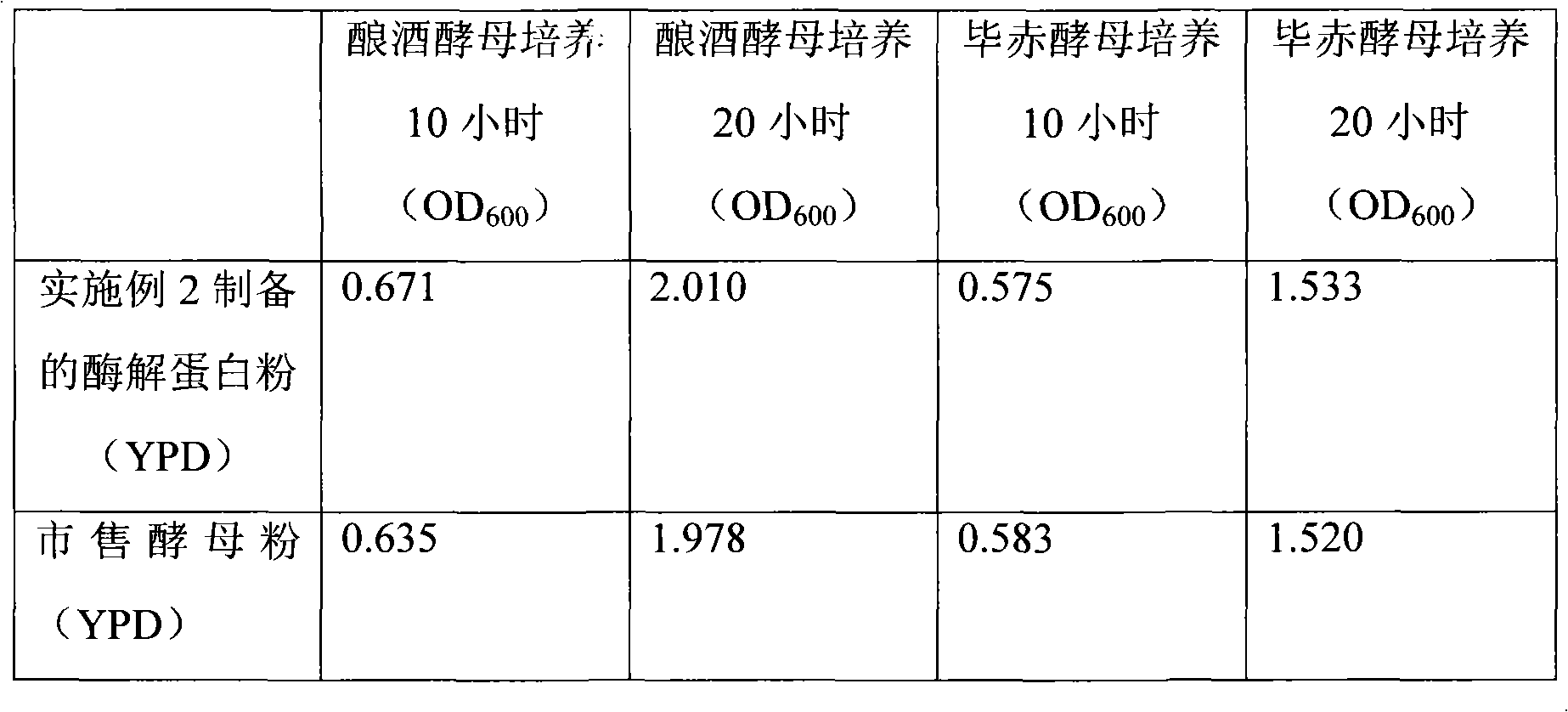Method for treating high-concentration wastewater of glutamic acid
A technology for glutamic acid and wastewater, which is applied in the field of bipolar membrane electrodialysis to treat other waste liquids and high-concentration glutamic acid wastewater, can solve the problem of high energy efficiency, reduce sewage treatment, realize commercial utilization value, and improve product quality. quality effect
- Summary
- Abstract
- Description
- Claims
- Application Information
AI Technical Summary
Problems solved by technology
Method used
Image
Examples
Embodiment 1
[0020] (1) The glutamic acid fermentation bacteria liquid uses a high-speed disk separator to separate the glutamic acid feed liquid and bacterial protein in the fermentation liquid. The speed of the high-speed disk separator to separate the bacteria is 4000-5000r / min
[0021] (2) Add the above bacterial protein into the stirring reactor, add appropriate amount of warm water and mix thoroughly, adjust the solid content to 8%, adjust the enzymolysis reaction temperature to 55°C, add a little sulfuric acid to adjust the pH to 6.5, add lysozyme 10kg / m3 respectively, acid Protease 25kg / m3, β-glucanase 5kg / m3, stir slowly, enzymolysis time is 6h, use amino acid analyzer to measure the content of various amino acids in the enzymolysis solution. The above-mentioned enzymatic solution is separated and removed by a disc separator to remove the cell wall, and the obtained supernatant is evaporated at a low temperature by a three-effect plate evaporator. The material is directly packed i...
Embodiment 2
[0024] Using the enzymolyzed protein paste obtained in Example 1 as a nitrogen source to replace commercially available yeast powder, a threonine fermentation test was carried out, and the average fermentation parameters of 5 consecutive tanks were respectively:
[0025] Using the enzymolyzed protein paste prepared in Example 1 as a nitrogen source, the fermentation broth produced 13% acid, the fermentation period was 28 hours, and the fermentation sugar-acid conversion rate was 68%.
[0026] Using commercially available yeast powder as a nitrogen source, the fermentation broth produced 14% acid, the fermentation period was 28 hours, and the fermentation sugar-acid conversion rate was 67%.
[0027] Through the above comparison, the product produced by the present invention can completely replace commercially available yeast powder products for threonine fermentation, thereby greatly reducing the cost of threonine fermentation.
[0028] Through high-performance liquid chromatog...
Embodiment 3
[0030] The enzymolyzed protein paste prepared in Example 1 is dried by spray granulation fluidized bed, and the obtained finished product is packaged into enzymatic bacterial protein powder (hot air temperature of spray granulation fluidized bed<150°C), replacing the standard The yeast powder in the YPD medium, and the rest of the ingredients remain unchanged. Saccharomyces cerevisiae and Pichia pastoris are cultivated under the same conditions, and the culture effect of the product is evaluated by comparing the growth of the cells.
[0031]
[0032] Determination of OD by nephelometric method 600 The growth of the cells was characterized, indicating that this product can replace commercially available yeast powder products and achieve the desired effect.
[0033] Taking Hulunbeier Northeast Fufeng Biotechnology Co., Ltd. annual output of 200,000 tons of glutamic acid production workshop as an example, the cost analysis compared with the traditional process after adopting t...
PUM
 Login to View More
Login to View More Abstract
Description
Claims
Application Information
 Login to View More
Login to View More - R&D Engineer
- R&D Manager
- IP Professional
- Industry Leading Data Capabilities
- Powerful AI technology
- Patent DNA Extraction
Browse by: Latest US Patents, China's latest patents, Technical Efficacy Thesaurus, Application Domain, Technology Topic, Popular Technical Reports.
© 2024 PatSnap. All rights reserved.Legal|Privacy policy|Modern Slavery Act Transparency Statement|Sitemap|About US| Contact US: help@patsnap.com








